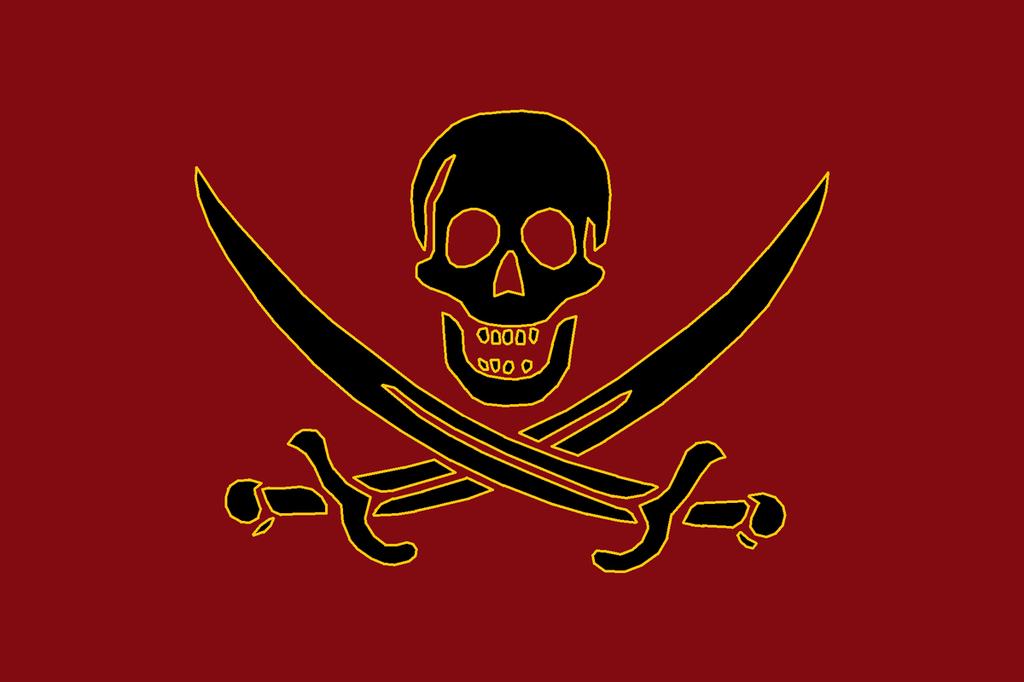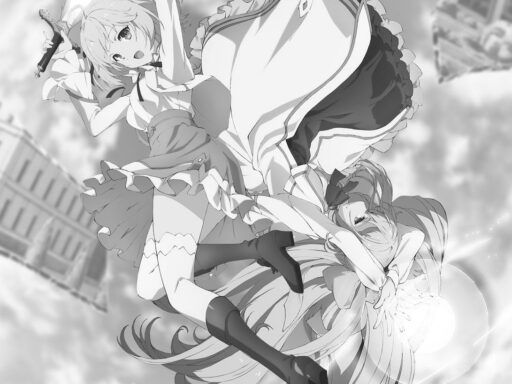Pirates flew the Jolly Roger flag primarily to intimidate their targets into surrendering without a fight. The black flag with skull and crossbones sent a clear message: give up and be spared, resist and face brutal consequences. This tactic saved pirates from costly battles and damages.

Different pirate crews customized the Jolly Roger to display unique designs. Early versions varied from plain black flags to red ones used by some French buccaneers. The skull and crossbones became the most recognizable symbol, but many pirates personalized their flags to identify their specific group.
Displaying the Jolly Roger served as a high-stakes warning. Pirates promised mercy to ships that surrendered immediately. If victims resisted, pirates would often follow through with severe violence and torture. This harsh policy helped many pirates capture ships efficiently.

Only pirates flew the Jolly Roger, because state navies or privateers risked being labeled pirates themselves if they used such flags. Merchant ships instantly recognized the black flag as pirate territory. While some state-backed Guarda Costa crews sometimes flew black flags, the association mostly remained with pirates.
Pirates usually approached targets under false colors matching the victim’s nationality to get close unnoticed. The Jolly Roger was raised only at the final moment before attacking, signaling the target that escape was unlikely and to surrender.

| Aspect | Details |
|---|---|
| Flag Variations | Black or red flags; customized skull and crossbones |
| Purpose | Induce surrender, avoid costly fights |
| Audience | Targets recognized pirates by the flag |
| Legal risk | Navies avoided black flags to prevent piracy accusations |
| Use of false flags | Approach under enemy colors before raising Jolly Roger |
- Pirates used the Jolly Roger as a psychological weapon.
- Flag designs varied but always signaled pirate identity.
- Raising the flag promised mercy for surrender but death if resisted.
- False flags helped pirates close in before revealing their true intent.
- Only pirates consistently flew the black flag to avoid legal consequences.
Why Did Pirates Fly the Jolly Roger?
Pirates flew the Jolly Roger to send a clear, terrifying message: surrender now, and you’ll live; resist, and you face a gruesome fate. This flag wasn’t just a spooky skull and crossbones slapped on black cloth—it was an ingenious, ruthless tool designed to make enemies drop their weapons without a fight.

But there’s far more to the story than just symbols of death. Pirates crafted, customized, and wielded these flags like psychological weapons. Let’s dive into why the Jolly Roger was more than just a spooky banner.
The Many Faces of the Jolly Roger: No “One Size Fits All”

Did you know there wasn’t one single, official Jolly Roger? Different pirate crews had their own twist on this infamous flag. Some early flags were simply black, while French buccaneers sometimes flew deep red flags. The classic skull-and-crossbones? That became popular, but it was only one option in the pirate toolbox.
Customization mattered. The more fearsome and well-known pirate crews used unique designs to broadcast their identity—and their reputation. It was their personal “brand,” sending a message not just that they were pirates, but exactly which pirates they were. This was clever because it helped ships recognize who was attacking, and sometimes, terrifying tales about a particular pirate’s cruelty preceded them.
The Jolly Roger’s Most Important Job: Inducing Surrender
Have you ever asked yourself, “Why not fight it out and take the ship by force?” Pirates weren’t big fans of messy battles. Fighting was expensive. Ships could get wrecked, crew members could get hurt, and damaged cargo meant less loot. The Jolly Roger served as a psychological weapon, a looming “We’ll end you if you resist” warning.
Flying the Jolly Roger told targets, “If you surrender now, we’ll treat you fairly.” Pirates often honored their word—once ships gave up without a fight, the crew usually made it through alive. But if a crew resisted? Pirates became merciless, sometimes inventing horrifying tortures to set examples. This brutal honesty made the Jolly Roger an effective “thin line” between mercy and massacre.
Why Did Only Pirates Use It? Navies and Privateers Kept Away…
The Jolly Roger was a flag with a very specific rep: pirates only. Why? Well, pirates didn’t have the legal backing of a government. If navies or privateers flew the black flag, they risked being legally branded as pirates—and that meant a death sentence if caught. It was a high-stakes “costly signal.”
Merchant captains understood this. Seeing the black flag meant “we’re dealing with ruthless pirates, not just another government-sanctioned privateer.” This clarity protected entire shipping routes in a twisted way—captains knew when to run for their lives or surrender. This exclusive ownership helped keep the Jolly Roger’s terrifying reputation intact.
The Art of Deception: Pirates and Their False Flags
Here’s a twist: pirates didn’t always raise the Jolly Roger right away. They were masters of disguise, using false flags to get close. Flying the same flag as their target ship was a classic pirate tactic.
This sneaky move let pirates close the gap without raising alarm bells. Only when they were near enough to strike did they hoist the dreaded black flag. It was the ultimate “Surprise!” moment before unleashing havoc.
What Can Modern Readers Learn from the Jolly Roger’s History?
You might think pirates were all rum, chaos, and treasure hunts—but they were also shrewd strategists. The Jolly Roger was more than a scary symbol; it was a calculated, psychological weapon used to minimize risks and maximize profit.
Imagine you’re a merchant captain in the 1700s. A black flag with a skull on it appears on the horizon. What do you do? Run? Surrender? Knowing the stakes, you likely surrender to save yourself and your crew. The pirates win without a fight—and everyone stays alive—or at least, mostly.
Why Does This Story Matter in 2024?
Even today, the Jolly Roger symbolizes rebellion, identity, and psychological warfare. Brands use logos like pirates once used flags—sending instant messages about who they are and what they stand for. And business negotiators sometimes deploy psychological tactics just like pirates did, aiming to make their opponents “surrender” deals without costly battles.
So next time you see a skull and crossbones, think about the savvy pirates of old. Those who flew the Jolly Roger didn’t just want to scare—they wanted to win smartly, with minimum damage and maximum impact.
Summary Table: The Jolly Roger in a Nutshell
| Aspect | Details |
|---|---|
| Variety | Multiple designs; black flags, red flags, skull & crossbones, custom artwork |
| Main Purpose | Signal pirates, induce surrender to avoid costly fights |
| Use by Others? | No; navies/privateers avoided it due to legal risks |
| Deceptive Tactics | False flags used to approach targets before raising Jolly Roger |
| Effectiveness | High; created fear and encouraged quick surrender, preserving pirate profits |
In closing, the Jolly Roger wasn’t just a pirate’s flag—it was a pirate’s silent negotiator, their psychological sword. It’s amazing to think that floating black cloth with a skull prevented countless battles at sea. Until you can say the same for your company logo, pirates still win for being masters of signaling, deception, and strategy!




